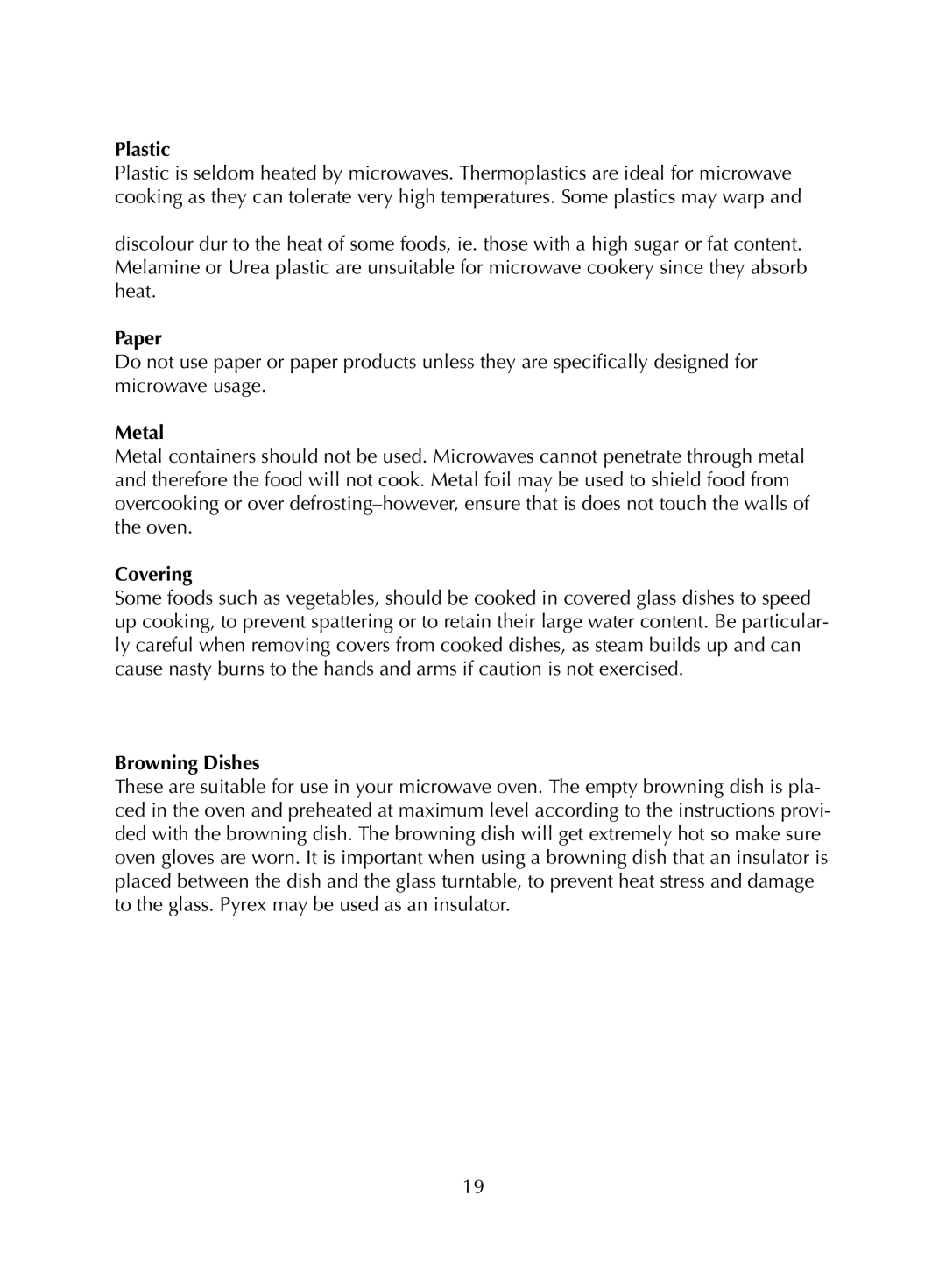
Plastic
Plastic is seldom heated by microwaves. Thermoplastics are ideal for microwave cooking as they can tolerate very high temperatures. Some plastics may warp and
discolour dur to the heat of some foods, ie. those with a high sugar or fat content. Melamine or Urea plastic are unsuitable for microwave cookery since they absorb heat.
Paper
Do not use paper or paper products unless they are specifically designed for microwave usage.
Metal
Metal containers should not be used. Microwaves cannot penetrate through metal and therefore the food will not cook. Metal foil may be used to shield food from overcooking or over
Covering
Some foods such as vegetables, should be cooked in covered glass dishes to speed up cooking, to prevent spattering or to retain their large water content. Be particular- ly careful when removing covers from cooked dishes, as steam builds up and can cause nasty burns to the hands and arms if caution is not exercised.
Browning Dishes
These are suitable for use in your microwave oven. The empty browning dish is pla- ced in the oven and preheated at maximum level according to the instructions provi- ded with the browning dish. The browning dish will get extremely hot so make sure oven gloves are worn. It is important when using a browning dish that an insulator is placed between the dish and the glass turntable, to prevent heat stress and damage to the glass. Pyrex may be used as an insulator.
19
